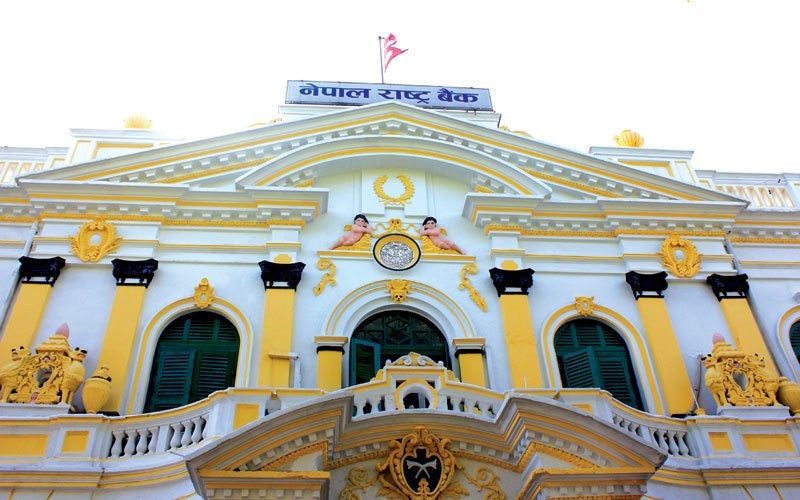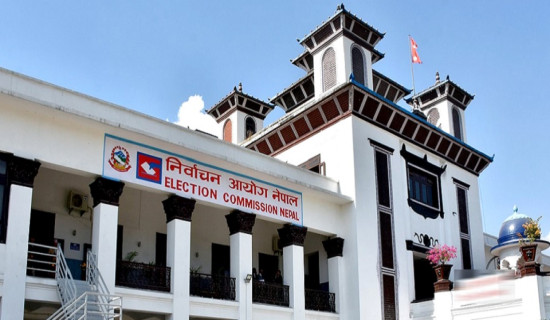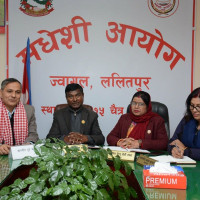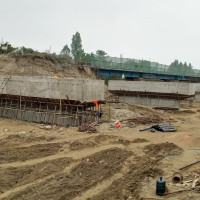- Thursday, 8 January 2026
Economy is in comfortable zone: NRB
Kathmandu, Sept. 18: Record inflow of remittance and reduction in imports of goods owing to the decrease in demands has ushered in the economy in a comfortable zone in terms of external sector management.
Due to depleting foreign currency reserves because of the massive growth in imports of goods, including luxury items like cars and liquors, the external sector pressure had significantly increased in the aftermath of the COVID-19 pandemic, and the experts had feared the country could experience the 'Sri Lankan' fate. Sri Lanka had then run out of foreign currency reserves and had failed even to service its loans.
The remittance inflows in the first month of the current Fiscal Year 2023/24 (mid-July to mid-August 2023) have increased by 25.8 per cent to Rs.116.02 billion compared to an increase of 20.3 per cent in the same period the previous year, according to a monthly report published by the Nepal Rastra Bank (NRB) on Sunday. Last year, remittance inflow in the first month stood at Rs. 92.21 billion.
Shrawan (mid-July to mid-August) is the ninth month that continuously witnessed more than Rs. 100 billion remittance inflow.
In the US Dollar terms, remittance inflows increased 21.5 per cent to 879.8 million in the first month while it had seen an increase of 12.5 per cent in the same period last year. Inflation of Nepali rupee against the US dollars had also caused the highest growth in the remittance inflow in any months since the country began to receive it.
Net transfer up by 26.1
Net transfer to Nepal increased by 26.1 per cent to Rs.128.21 billion in the first month against the growth of 18.4 per cent in the same period last year.
The growth in the influx of remittance is also by the increased number of Nepali workers to foreign countries.
Number of Nepali workers (institutional and individual-new) taking approval for foreign employment had increased by 75.4 per cent in the first month of the last fiscal.
It has been decreased by 12.1 per cent to 39,152 in the review period. The number of Nepali workers (Renew entry) taking approval for foreign employment decreased by 19.5 per cent to 16,423 in the review period.
Likewise, decreased demands in the domestic market had checked the imports. During the first month of 2023/24, merchandise imports decreased by 1.6 per cent to Rs.129.24 billion compared to a decrease of 12.9 per cent a year ago.
Foreign currency reserves cross Rs. 1573 bn
Meanwhile, the foreign currency reserves have reached Rs. 1573.12 billion by mid-August with an increase of Rs. 34 billion from the previous month. Although the government and the NRB have lifted the control measures in imports and foreign trips, reserves have taken an upward trend. According to the central bank, the current foreign currency reserves are sufficient to cover the imports of goods for 12.5 months and imports of goods and services for 10.3 months.
Likewise, the current account has remained at a surplus of Rs.12.99 billion in the review period against a deficit of Rs.15.13 billion in the same period the previous year. This has happened after about 33 months since the current account was in deficit since mid-November 2020.
In the US Dollar terms, the current account registered a surplus of 98.5 million in the review period against a deficit of 118.8 million in the same period last year.
Inflation still poses challenge
Consumer price inflation is still high although it has significantly come down to 7.52 per cent by mid-August this year from 8.26 per cent a year ago.
According to the NRB, food and beverage inflation stood at 8.95 per cent whereas non-food and service inflation stood at 6.42 percent in the review month.
Under the food and beverage category, year on year price index of spices sub-category increased by 45.56 per cent, cereal grains and their products by 13.20 per cent, milk products and eggs by 12.19 per cent, restaurant and hotel by 11.05 per cent and vegetable by 10.80 per cent.
But price index of ghee and oil sub-category decreased by 15.13 per cent.
Similarly, under the non-food and services category, year on year price index of recreation and culture sub-category increased by 15.55 per cent, education by 9.10 per cent, housing and utilities by 6.93 per cent and furnishing and household equipment by 6.79 per cent.












-original-thumb.jpg)



